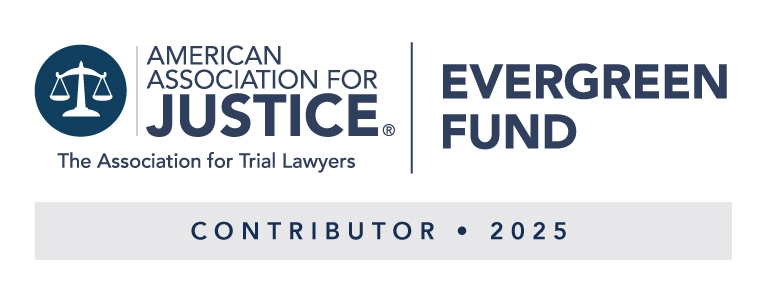AMERICA MUST PASS COMPREHENSIVE POLICE REFORM NOW TO SAVE LIVES

Authored by Benjamin L. Crump and Antonio M. Romanucci
Overview: America was stunned by the July 2024 death of unarmed 36-year-old Sonya Massey in central Illinois, not only because she was fatally shot in the face by a Sheriff’s Deputy while the two were discussing a pot of water but because it was later learned that the Deputy had a history of “wandering” between jobs at six law enforcement agencies in four years. His history of concerning behavior and reports about his behavior should have been factored into the decision to hire him. If a database with this type of information about police complaints and misconduct - and a more robust hiring and certification process - had been created as proposed in the George Floyd Justice in Policing Act (which passed the U.S. House in 2021 but failed in the U.S. Senate), we believe this Deputy never would have been hired for his most recent job and Sonya Massey would be alive.
Further, in early 2023, America witnessed on videotape the brutal beating of unarmed Tyre Nichols by Memphis Police Department officers. His death, which is now being charged as a murder, served as a stark reminder that America has failed to change police culture to better protect Americans – especially the Black and Brown Americans who are most vulnerable to police violence. The tragic death of another Black man by a group of officers was all too consistent with and reminiscent of the 2020 murder of George Floyd in Minneapolis, which many assumed would lead to systemic change so that these heinous acts of unnecessary death at the hands of law enforcement would end. New York Times opinion editor Charles Blow called Tyre’s death a direct result of the country’s failure to pass the comprehensive federal police reform bill that was to be named after George Floyd. In an editorial, Blow writes: “America — and the world — had the realization that police violence was a problem, and then it simply walked away before the work was done and the war was won.”
America simply cannot wait any longer for federal police reform.
The murder of Floyd in 2020 ignited a new era of civil rights momentum in America. For some Americans, it brought to the forefront deep-seated issues and concerns about justice and policing, while for others, it created a new or increased awareness of the need to create trust between police and communities of color. Together, these groups aligned and pushed for comprehensive police reform at the local, state, and federal levels.
Data showed in 2020, and continues to show, Black and Hispanic males are shot and killed by police at nearly twice the rate as white Americans. Other data by Mapping Police Violence confirms what many Black citizens already know: that Black people are three times more likely to be killed by police. Data on other types of police violence against Black people, like the use of prone restraints or, deadly beatings, as in Tyre Nichols’ case, is not collected effectively nationwide.
Deep need for reform, and deep disappointment thus far
Despite the passage of the George Floyd Justice in Policing Act by the U.S. House of Representatives in March of 2021, the bill failed in the Senate due to a lack of bipartisan support. The type of federal legislation would increase accountability of law enforcement misconduct, restrict the use of certain policing practices, enhance transparency and data collection, and establish best practices in training - all with the intent of fostering trust between police and the communities they are sworn to serve. Designed to further professionalize and standardize policing, this type of legislation is desperately needed at the federal level but currently remains an elusive dream.
The Federal Executive Order on Police Reform, signed by President Joseph Biden in May 2022, directed some needed changes, but it only applied to federal officers, leaving the lion’s share of the work at state and local levels unfinished.
While some reforms have been made at the state and local levels since the death of George Floyd, the patchwork of progress illustrates the inconsistency between the nation’s 18,000 police departments. Colorado, California, Maryland, Iowa, New Mexico, New York and Illinois have recently passed multi-faceted laws to address the immunity of officers involved in misconduct and tactics like chokeholds, as well as to mandate body-worn cameras. The Illinois SAFE-T Act made progress on a number of key reforms but did not fully create the comprehensive database, hiring, and certification programs we feel could have prevented deaths like Massey’s. Minneapolis added significant reforms that clarify use of force reporting, emphasize de-escalation requirements focusing on the sanctity of life, and restrict the use of no-knock warrants, and Minnesota Representative Ilhan Omar’s proposed the Amir Lock No Knock Warrant bill in Congress in February 2023.
At last count, analysts have found that 1,000 police reform laws have been proposed in the U.S. since 2020. The lack of consistency from state to state, let alone city to city, makes it difficult for citizens to know what to expect when encountering law enforcement. Clearly, more work needs to be done.
We need a federal standard to raise the bar on professional policing standards by forming a unified set of guidelines for the country. No other industry, especially other life-or-death professions, operates with this level of independence, immunity, and inconsistency.
America demands change and lawmakers need to listen
A survey by CBS NEWS/YouGov in February of 2023 showed:
An overwhelming majority of Americans, 89%, believe some type of police reform is needed.
Nearly half of those surveyed, 47%, indicated major reform was necessary and a further 42% said minor reform was required. A smaller group of 11% felt no change was needed. The strong majority who believe more progress is needed in police reform grew from 75% in a 2020 survey to 89% three years later.
The continued political stalemate and stagnation in Washington, D.C. is a headwind for police reform, but lawmakers need to listen to their constituents seeking positive change in law enforcement.
Bad policing costs our communities
The cost of police misconduct goes beyond destruction of community trust and can, in fact, be quantified by the financial cost of verdicts and settlements attempting to compensate those injured by law enforcement actions.
Released in March 2022, a comprehensive and groundbreaking Washington Post investigation on the cost of police misconduct revealed how little data is available but managed to provide a broad view of the financial toll of misconduct on municipalities. Of the 25 police departments analyzed, the study estimated that localities paid out more than $3 billion over the last ten years to citizens wrongly injured or killed by police. Tragically, more than half of the amount of those payouts, around $1.5 billion, involved officers who had repeated complaints or lawsuits due to their misconduct. A major aim of police reform is to identify, document, re-train or remove those high-risk officers, thus reducing the financial liability for cities.
Civil justice movements targeting the US law enforcement systems have arisen in the past but, unfortunately, failed to produce lasting and meaningful reform. Establishing trust between communities and police will require comprehensive change and a set of agreed-upon federal standards common to all law enforcement. Defining a proper role for police and funding appropriate training and reforms will lead to improved accountability, which is essential to have true community policing.
We offer this paper as a blueprint for reforms that will yield greater transparency and accountability to create a level of trust between citizens and the officers who are sworn to serve and protect their communities – and ultimately save lives.
I. Standardize and professionalize policing
Historically, police standards – including hiring and recruitment, selection, certification, training, procedures, and protocols – have been established at the local level, with wide variations from jurisdiction to jurisdiction. This process sits in stark contrast to other professions, even those where daily job duties and performance does not carry similar life-and-death implications to law enforcement. Professionals in law, medicine, aviation and even hairdressing have required minimum education, training and licensing standards that include oversight and regulation by a governing body empowered to revoke licenses for violations of performance standards, as well as to prohibit dismissed individuals from gaining employment in other locations or businesses. Uniform standards are absent in law enforcement, where thousands of agencies at the federal, state, and local levels adhere to different standards promulgated by a multitude of organizations, including The Commission on Accreditation for Law Enforcement (CALEA), Peace Officer Standards and Training (POST), Federal Law Enforcement Training Accreditation (FLETA) and the International Association of Chiefs of Police (IACP). Individual agencies have independent and non-uniform guidelines created by their respective unions that are not binding across the entire law enforcement industry.
We believe a national standard setting a minimum bar with consistent expectations is crucial to creating uniform, professional policing in every jurisdiction and at every level while also allowing local agencies to adapt the way they conduct their departments to local community needs. A national standard would enable an agency to measure and discover areas in an officer’s skillset that may need reinforcing, retraining or reprimand, ensuring that policing is kept to a respectable and efficient standard well after recruitment.
The on-the-job experiences of law enforcement officers can inflict a heavy toll on the mental health and well-being of those officers, who are routinely called upon to deal with the darkest areas of human behavior. "Tough-it-out” traditions of law enforcement often force officers to internally bury the worst of what they encounter. While some strides have been made in providing mental health resources, too few agencies offer robust assistance or a culture that helps these officers process the negativity in a constructive and healthy way. The cultural code of silence within police departments, coupled with the stresses of the job, lead to a mental health spiral for officers. To enhance the overall professionalism of law enforcement, as well as officer safety, agencies must address the mental health needs of their own officers. This should include assessment, training, insightful psychological exams, compassionate treatment, mandatory job rotation and reassignment of duties, if necessary.
We therefore recommend adoption of:
- National licensing standards to ensure consistency, with a baseline of performance and measurements, as well as a clear process to decertify officers who are no longer fit for duty.
- A mandatory background check for all police hiring with a waiting period to receive and process background check results.
- Model policies and procedures to create a roadmap for law enforcement leaders.
- Development of a national police hiring exam that identifies suitable candidates on psychological, emotional, physical, and intellectual levels.
- Standard and consistent training to prepare and maintain officers fit for duty, keeping perishable job skills sharp with regular and interactive training modules.
- Enhanced mental health services for officers to prepare them for their duties and support them throughout their career.
II. Enhance accountability and transparency
Law enforcement officers are public servants, and a sacred trust should exist between them and the communities they police. For this trust to be realized, officers must be accountable for their actions. The public needs and is entitled to full visibility and transparency on the part of law enforcement. However, policing today is beset by wide variations in a range of areas, including incidents that involve civilian injuries or deaths in police custody; investigations into police actions; when and how police are disciplined; the use of body-worn cameras; the types and completeness of information made available for public scrutiny; and reporting of data on use-of-force and other practices. When investigations into police conduct are carried out by police agencies themselves – often limited by collective-bargaining requirements – their objectivity is, at best, questionable.
The addition of uniform accountability measures, including national baselines for reporting; standardized protocols for independent investigations; an accessible database of disciplinary actions; and mandates for the use of accountability technology such as bodycams and dashcams; can elevate public trust through such transparency. Bodycams, for example, provide incontrovertible documentation of police conduct, both when it is reasonable and justified, as well as when it is excessive. The use of this technology should be mandatory in all jurisdictions, and a national standard should be established for its appropriate use and implementation. Intentionally turning off a bodycam should be a federal obstruction of justice violation, and officers should face a rebuttable presumption of guilt and a requirement to explain why the camera was turned off during an encounter with civilians. In addition, the routine use of body cam analytics can transform police cultures by increasing officer professionalism, driving de-escalation, and reducing use of force.
Reporting
Data on police killings is challenging to find, making it difficult to quantify the scope and nature of citizen deaths at the hands of police. Law enforcement agencies face few sanctions for failing to report such information and have little incentive to transparently report data on police activity, particularly the use of deadly force. This lack of reporting allows excessive use of force to continue while further undermining public trust. Government officials should be troubled that the news media has expended more resources investigating officer-involved shooting deaths than police departments or the federal government. This is a national embarrassment. The work done by the Citizens Police Data Project in covering complaints against Chicago police officers presents an example of what a national data clearinghouse could look like.
The FBI operates a voluntary program through which law enforcement agencies may submit their annual count of “justifiable homicides,” which it narrowly defines as “the killing of a felon in the line of duty.” This non-mandatory system of reporting may be less valuable than having no system at all as fluctuations in the number of agencies choosing to report, plus faulty reporting by those agencies that do so, have resulted in partially informed news coverage that points misleadingly to trends that may or may not exist. Compounding this issue is the reality that those agencies with the worst problems with excessive use of force are the least likely to participate in a voluntary system.
Between 2005 and 2012, just 1,100 law enforcement agencies – a small fraction of America’s 18,000 police agencies – reported a justifiable homicide to the FBI. The FBI system included 461 justifiable homicides by law enforcement in 2013, the latest year for which data are available. Crowdsourced counts, however, identified almost 300 additional fatalities during that one year. The Counted, an investigation by the publication The Guardian into the true number of people killed by law enforcement, reported when it launched on June 1, 2015, that it had already found close to the voluntarily reported annual number of killings in just the first five months of 2015. The Washington Post runs a similar study tracking the number of fatal police shootings and has found that the FBI undercounts fatal police shootings by more than half. The Washington Post's own research over the past five years has discovered that around 1,000 fatal police shootings occur every year.
Additionally, as in the Sonya Massey case, there is a clear need nationwide to understand more about the officers who encounter and serve members of their communities. We call for a detailed and public database of signed police misconduct complaints, convictions and other material indications that a person may be unsuitable for law enforcement service. This database should be transparent and available to the public and, importantly, to those responsible for doing background checks on applicants for roles in policing.
Accountability and Qualified Immunity
The concept of qualified immunity originally intended to protect government officials from legal or civil trouble for performing the known duties of their positions. Modern judicial decisions have expanded qualified immunity for police officers to a point that it shields them from civil lawsuits unless plaintiffs can show that the officer violated a clearly established statutory or constitutional right of which a reasonable person should have known. In practical application, courts have held that unless a plaintiff can show a case in which those rights were violated and a court ruled in favor of the injured party, qualified immunity serves as a get-out-of-jail-free card for offending officers. Qualified immunity has protected officers from facing the consequences for actions where the use of force has not been justified, and citizens have been injured or killed as a result. In such cases, justice – both civil and criminal – has eluded those who deserve it most.
Police officers who behave outside the bounds of the law should face consequences for their actions. We propose the elimination of qualified immunity for law enforcement personnel. Further, a clear federal definition of what constitutes a “reasonable” police officer should be instituted to ensure that the same standard is applied everywhere to avoid misinterpretation or varied interpretation at the local level. However, it is important to note here that the elimination of qualified immunity alone is not enough. To maintain accountability to victims of police violence, municipalities must remain indemnifiable to compensate a victim for actions by a third party (in this case the officer), or have respondeat superior, which translates from Latin to “the master must answer” and means an employer is responsible for the actions of employees performed in the course of employment. The combination of removing the blanket officer protections of qualified immunity while retaining recourse to accountability by their employer is critical to achieving justice.
We recommend adoption of:
- Creation of a National Police Accountability Oversight Task Force to set consistent standards and expectations.
- A mandatory, permanent and public national database of officer misconduct to provide transparency and consistency.
- Uniform reporting standards by agencies to generate reliable data and understand trends in policing.
- Uniform use of body-worn cameras and policies to provide documentation of citizen encounters with officers.
- Uniform use of body cam analytics to drive and reinforce professionalism and accountability.
- Intentionally turning off a bodycam should be a federal obstruction of justice violation with a rebuttable presumption of guilt for officers who turn off a bodycam in a case involving a police shooting.
- A standard, independent investigatory process for impartial inquiries of officer misconduct allegations.
- Removal of qualified immunity protections for law enforcement personnel to create full accountability and increase community trust, while ensuring either municipal indemnity or respondeat superior.
III. Reframe the role of police with the aim to preserve life
Militarization of law enforcement
U.S. law enforcement has become increasingly militarized over the past 40 years, in large part due to its association with the war on drugs and efforts to combat terrorism, as well as the availability of surplus military gear from decades of overseas wars. U.S. military activity since 9/11 has also produced a new generation of military veterans seeking civilian work in law enforcement. This abundance of military veterans has altered the relationship between officers and the communities they police and has led to an exponential increase in the use of lethal force.
As we reframe the role of civilian law enforcement in American society, we must make explicitly clear this premise: all human life has dignity and value, and police must take life only as a last resort when their own lives, or the lives of other citizens, are actively and imminently threatened without other options.
Use of lethal force
Wide differences currently exist in determining whether an incident meets the threshold for the use of deadly force, and if and how such force must be reported and investigated. Progress in this important area of policing will require, among other factors, a common understanding regarding the definition and use of deadly force.
Currently, a split exists among agencies as to how they categorize the use of lethal force. Some law enforcement offices and departments determine categories based on whether the officer fires a service weapon, regardless of whether a subject is killed or injured, while others apply the term even if an officer points a firearm at a subject without discharging it. Not all agencies report lethal force incidents to the FBI Uniform Crime Report (UCR). Many use-of-force reports use boilerplate language incorporating such buzzwords as, “I was in fear for my life,” rather than detailing the behavior that caused such fear within the officer. Supervisors allow this vague language to proceed up the chain of command, enabling officers to evade meaningfully explaining their actions. In some jurisdictions, post-event interviews allow officers to justify their actions by claiming that the incident was “rapid, tense, and uncertain,” words specifically designed to satisfy the objective reasonableness standard established in 1989’s Graham v. Connor.
Establishing a common understanding of what constitutes and justifies the use of lethal force, determining when it should be reported and to whom, and adopting a process for unbiased interviews all are vital steps on the path toward arriving at the truth. Determination should be made regarding the incremental use of force to maim versus shooting to kill, and if so, under what circumstances force and firearms should be used and escalated.
Restraints
Although air chokes have been banned since the 1980s, the public continues to see – and be outraged by – deaths from positional restraint asphyxia, in which body position interferes with the subject’s ability to breathe. The flashpoint case of Floyd generated national and then worldwide attention after he died in May 2020 due to restraint or compression asphyxia, which occurred even though he was handcuffed on the ground and posed no threat to the attendant officers. As far back as 1995, the U.S. Department of Justice warned law enforcement agencies, “in a recent analysis of in-custody deaths, we discovered evidence that unexplained in-custody deaths are caused more often than is generally known by a little-known phenomenon called positional asphyxia.” The document, a bulletin from the National Law Enforcement Technology Center, detailed the basic physiology of a struggle, noting that suspects are often perceived to be resisting when, in fact, they are struggling to breathe.
Additionally, standardized training on use and risks associated with restraints, electronic control weapons, tasers, and impact weapons is needed to prevent unnecessary deaths in police custody. Such training would mean changing the common practices of officers who have used such techniques for years or even decades, a robust, repeated, and hands-on training protocol would be required to bring about effective change.
No-knock warrants
In recent years, intrusive and dangerously high-stakes tragedies related to the execution of no-knock warrants have risen to the public consciousness, as well. The deaths of Breonna Taylor and Amir Locke, both of whom died after being awoken by law enforcement seeking other people during service of no-knock warrants, show the clear and present danger of this policing tactic. The cities directly impacted by these two tragedies, Louisville, KY and Minneapolis, MN, have since each moved to significantly limit the use of no-knock warrants by law enforcement and a Congresswoman from Minnesota has begun to champion this issue in Congress, but more needs to be done. We advocate for bans or, at least, a severe reduction of no-knock warrants by all police departments across the country and for more clear and transparent data collection and reporting so citizens can see and understand the scope of this issue.
“Saturation Units”
The SCORPION unit of officers that beat and killed Tyre Nichols in Memphis is not unique. Many cities across the country, including Chicago, Atlanta, Los Angeles, and others, are well-known for this type of police saturation, suppression, or oppression unit, whose mission on paper is to reduce serious crimes like homicides, major drug rings, or carjacking. These units have a troubled history of making pre-textual stops of Black and Hispanic people in search of something criminal, as well as using violence, intimidation, and excessive force without cause - all of which are constitutional violations. The former police officers charged in Nichols’ death now face several counts, including second-degree murder and kidnapping, for taking away his ability to move freely. Memphis disbanded this SCORPION unit after Nichols’ death; all cities operating similar units should do the same. This style of policing only foments intense ill will and distrust in communities, and we challenge law enforcement leaders to rethink their engagement in communities with higher rates of crime.
Encountering citizens with mental health concerns
An estimated 25% to 50% of people who are shot and killed by law enforcement were experiencing a mental health crisis when 911 was called. A key part of reframing the role of police is to provide the necessary professional support for cases that involve a suspect with a mental illness. In many cases, these encounters require skill to analyze, de-escalate, and provide medical/mental health care. Police dispatchers and 911 operators must receive ongoing training to ascertain if an individual is mentally ill and/or experiencing a mental crisis, as well as whether the person is off or on psychotropic medication, under the care/treatment of a mental health professional, self-medicating with illegal controlled substances such as methamphetamine, or had prior 72-hour holds. The information derived from the initial call often contains the most critical intelligence to be provided to first responders, as it should trigger a co-response from a mental health professional.
Too often, we see officers issue repeated staccato commands to personal suffering from a mental health crisis, who may have challenges processing and responding appropriately, leading to a misunderstanding and escalation of force. Police and government agencies must discuss ways in which they can provide a more fulsome and compassionate response – one that does not simply use force to subdue a person during a mental health crisis – to bring an appropriate and peaceful resolution whenever possible.
We recommend:
- The demilitarization of policing to emphasize the sanctity and preservation of human life, including banning chokeholds, prone restraints and placing significant limits on no-knock warrants.
- Elimination of “saturation units” and a rethinking of ways to engage with communities to reduce serious crimes.
- A common curriculum in de-escalation.
- Continuous training in de-escalation techniques to provide an ongoing learning environment and to ensure that officers’ skills and responses are appropriate and up to date.
- Use of body cam analytics to promote de-escalation.
- Additional mental health support to ensure that appropriate resources and a humane approach are used with those in crisis.
Conclusion: Comprehensive reform to America’s policing profession remains a top need in our communities and an urgent issue that Congress has a responsibility to address. A tumultuous 2020 exposed longstanding fissures in our society in the relationship between police and the communities they serve. Optimists hoped that the one-in-a-generation call for change would be heeded and police departments across the country would engage in self-assessment and lead the change. That, of course, did not happen. What our nation witnessed in early 2023, with the brutal death of Tyre Nichols in Memphis, was evidence that those deep-seated problems - including discrepancies related to race - remain entrenched in law enforcement. As a consequence, communities of color don’t trust those who have promised to protect and serve them. Further, the tragic death of Sonya Massey in 2024 illustrated the deep need to better report about, understand and manage the individuals who are given a badge and a service weapon. We need transparency from each police department and clear, real-time communication between them and by a shared oversight organization.
Since the death of George Floyd there have been modest attempts at reform at the local level in some cities and states but meaningful reform to the militarized culture of policing in America remains tenuous. The nation’s 18,000 police departments need a consistent set of standards, accountability policies, training, and oversight, which will improve the quality of life for citizens as well as for police officers themselves. The appalling cases of police misconduct that have increased the public’s consciousness can, and should, be used as a rallying cry for positive and lasting police reform.
We believe the pillars of standardizing and professionalizing policing, creating greater accountability and transparency, and reframing the role of police to preserve life are essential to our progress and health as a nation. Change of this magnitude will require time, expertise, the investment of dollars, and difficult emotional and cultural work to move forward and rebuild trust. Legislators and government officials must respond to public insistence for change while having law enforcement leaders at the table and fully engaged in the transformation of policing. We call for all stakeholders to resurrect conversations with community leaders and law enforcement and move forward with legislative reforms to heal and help move our country into a new era of policing.
America can’t wait any longer.
Join us in contacting your member of Congress and urge them to pass comprehensive police reform.
Related Attorneys
- Founding Partner














